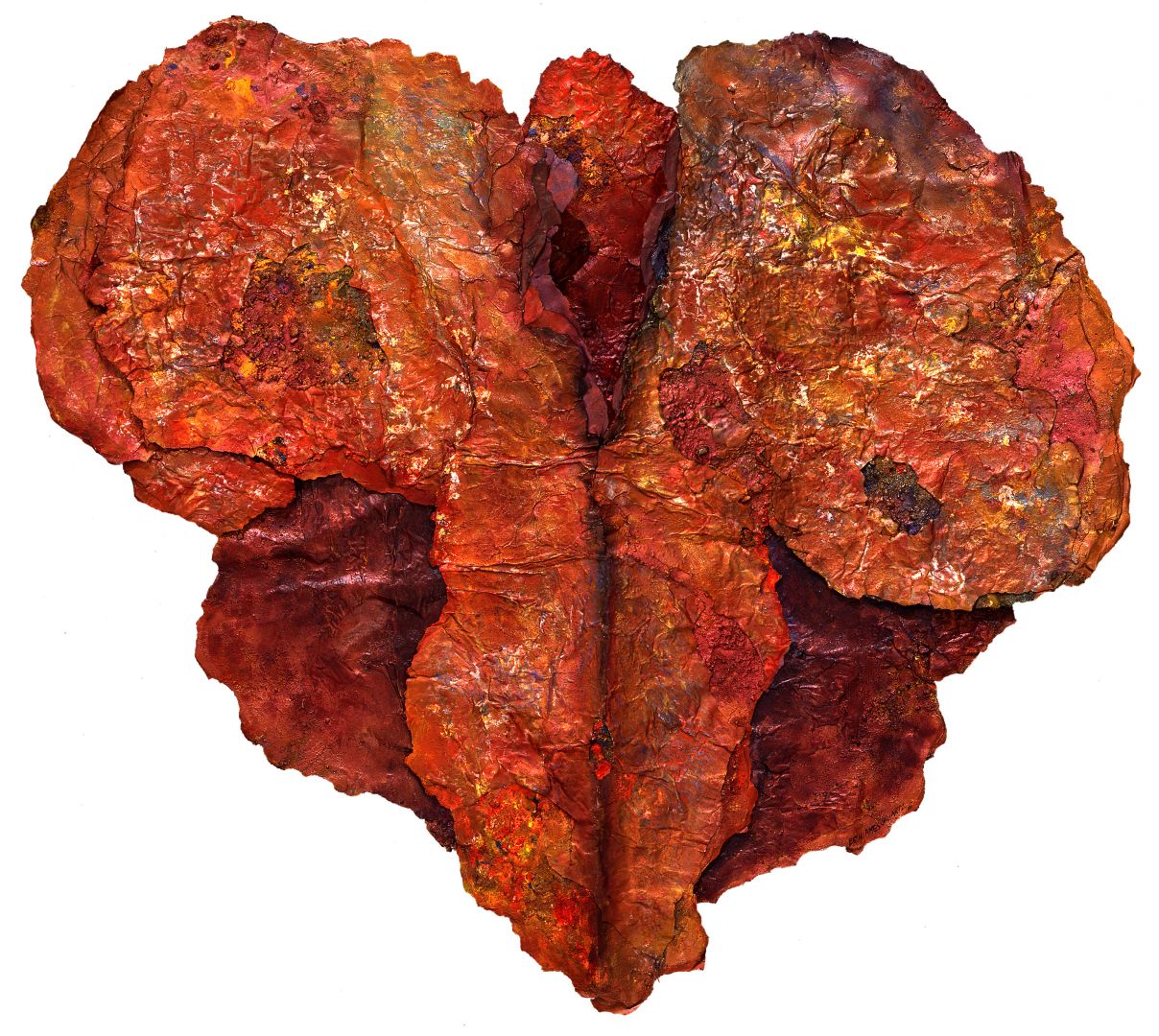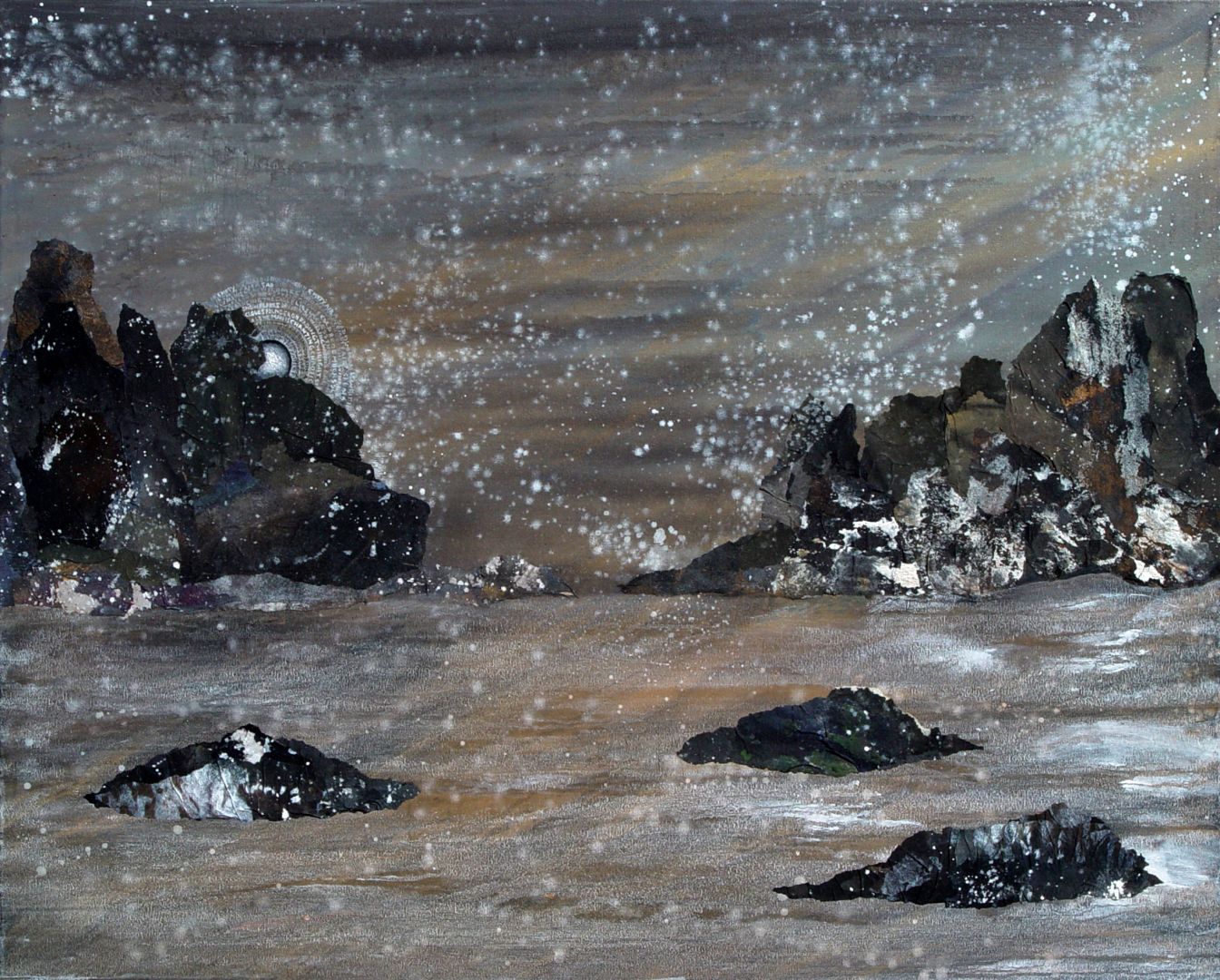Meet Beth Ames Swartz | Full time fine artist

We had the good fortune of connecting with Beth Ames Swartz and we’ve shared our conversation below.
Hi Beth, how do you think about risk?
Risk taking has been a major part of my creative process and my ongoing career. Coming from a scientific family, the idea of having a vision and following it through to it’s conclusion is part of my DNA. Reading Betty Friedan’s “The Feminine Mystique” (1963) resulted in my becoming an early active eco-feminist. My feminist friend, Arlene Raven, came to Arizona to support my starting a consciousness-raising group here, which in the 1960’s was against the social norms of that period. Writer Suzi Gablik’s controversial, “Has Modernism Failed?” (1984), calls for socially relevant and spiritually informed art, and her subsequent books radicalized my idea of what art can achieve in society. These women were foundational in my development as an artist who takes risks.
Going down the Colorado River in a raft twice in the early 70’s, I viscerally bonded with the earth that led to my developing a process/ritual and producing “Fire Work” that was inherently risky and dangerous, yet resulted in my embracing the concept of both aesthetic and personal transformation. Using fire as an art form, I acted out the natural biological cycle of life/death/rebirth by emptying my mind and rolling out the paper (birth or order), mutilating the paper using a screwdriver and burning the mutilations (death or disorder), and finally adding earth and mixed media to achieve transformation (rebirth or reordering); thus creating beauty out of destruction. Sometimes the study for a project and the first painting takes a year because I’m metaphorically exploring, developing, and learning a new language.
I have always worked in series and each series comes from a deep need to explore and understand a question, an idea, or a system of knowledge, some well known and others more esoteric, and translating their philosophical concepts into aesthetic visual experiences. After each project, embarking on a new idea is like jumping off the bridge and learning to fly on the way down. Often I have risked my entire income and gallery representation because I have embarked on a long project that has no visible sales potential.
For instance, my “Fire Work” in the late 70’s and early 80’s received national critical acclaim and eventually “Israel Revisited”, a 5 year project where I did pilgrimage to 10 sacred sites in Israel and performed my process/ritual to honor women in Jewish history, was shown at the Jewish Museum in New York and went to 8 other museum venues. Several shows and gallery exhibitions in New York resulted in abundant financial remuneration. However, immediately after “Israel Revisited” I started what turned out to be a 10 year project, “A Moving Point of Balance”. After experiencing the emotional impact of the “Rothko Chapel”, I was inspired to create a participatory healing environment balancing male and female energies. This installation involving the 7 chakras resulted in seven 7×7 foot paintings with accompanying light-baths, and was eventually sponsored by The Nickle Arts Museum in Calgary, Canada and toured 11 museums. This project resulted in my losing representation from galleries who wanted me to continue producing “Fire Works”.
Through the years, I have continued creating many subsequent art series without considering the outcome. I prioritize my integrity over financial gain and this ongoing endeavor is a risk that I’m always willing to take in my art practice because my motivation in creating art comes from a deep need to explore and express ideas and follow them through to their logical conclusion. My art is a quest, a healing and devotional activity that has changed my life and hopefully inspires it’s viewers.


Let’s talk shop? Tell us more about your career, what can you share with our community?
I guess what sets me apart from many artists here in Arizona is that I have been active in my art practice nationally for 60 years and still continue working at new projects. I’m excited about my newest series, “Broken World” (2021-22), based on Hart Crane’s poetry. I am especially inspired by one line in his poem, “Broken Tower”; “And so it was I entered the broken world, to trace the visionary company of love”. This line, in a sense, sums up both my life and art.
Although I work in series and each series may look different, each project has its own “look” and is true to its own vision within the larger context of trying to understand and interpret our relationship to our world. In my entire body of work, I am saying the same thing again and again in different ways. My art practice explores the concept of transformation or healing and deals with the basic life/death/rebirth metaphor. Some series evolve over a multi-year period. For instance, the “Thirteenth Moon” series based on 8th century Chinese poetry evolved from 2008-2014. We translated the poetry, and it was surprising to me that visionary landscapes evolved and developed naturally as my color palette changed and I let the emotion of the poetry lead me.
Exploring the life/death/rebirth process in my art recapitulated my own wounds and eventually healed them. Often, traumatic experiences from childhood eventually get projected out into the world, but healing comes from within. All this sounds simpler than it is, but I guess my art saved my own life in many ways by my determination to continue to push beyond what is comfortable into the discomfort of the unknown. I truly believe in the concept of transformation. I guess you could call me a transformative artist. Years ago, talking about spirituality in art or some of these “new age” ideas was heresy in the art world, but I pushed forward in my art practice and was willing to go my own way in order to make sense of my own life and experiences. Through study, research, and trial & error, I try to translate these experiences visually.
In a way, my work can be seen as both personal as well as universal, as we all struggle with the basic questions; Who am I? What is my life purpose? How can I contribute to this world? What have past wisdom seekers taught us? After 86 years of living and 60 years of trying to be the best artist I can be AND the best person I can be, I truly believe that as a culture we must excavate our anger & fear and get to the love, or we are doomed. We MUST learn to treat each other better and with kindness. Every series that I have explored interpreting wisdom systems, different cultures, and philosophies through my art all say the same thing; “All life is sacred. Why haven’t we learned it yet?”
It’s easy to say to an aspiring young artist, “Don’t give up! Keep doing your art.” But life can get in your way. We all have struggles to deal with in life. I can reiterate to aspiring artists the importance of staying with their art practice and digging deep to constantly ask, “What do I want to say? How do I want to say it?”
To learn more about my work, visit my website bethamesswartz.com and check out my PBS film, “Reminders of Invisible Light”.


Any places to eat or things to do that you can share with our readers? If they have a friend visiting town, what are some spots they could take them to?
Phoenix Art Museum
Scottsdale Museum of Contemporary Art (SMOCA)
The ASU Art Museum
Finish off the day at Soi 4 for dinner


Shoutout is all about shouting out others who you feel deserve additional recognition and exposure. Who would you like to shoutout?
I dedicate my shoutout to Barbara Kemp Cowlin. As a fellow artist who has been supporting my Artist Breakfast Club for many years, she has continually encouraged and supported me in continuing to create a community of professional Arizona-based artists.
email: bcowlin@gmail.com


Website: bethamesswartz.com
Instagram: bethamesswartz
Facebook: Beth Ames Swartz
Other: https://vimeo.com/291409573
Image Credits
John Rothschild
